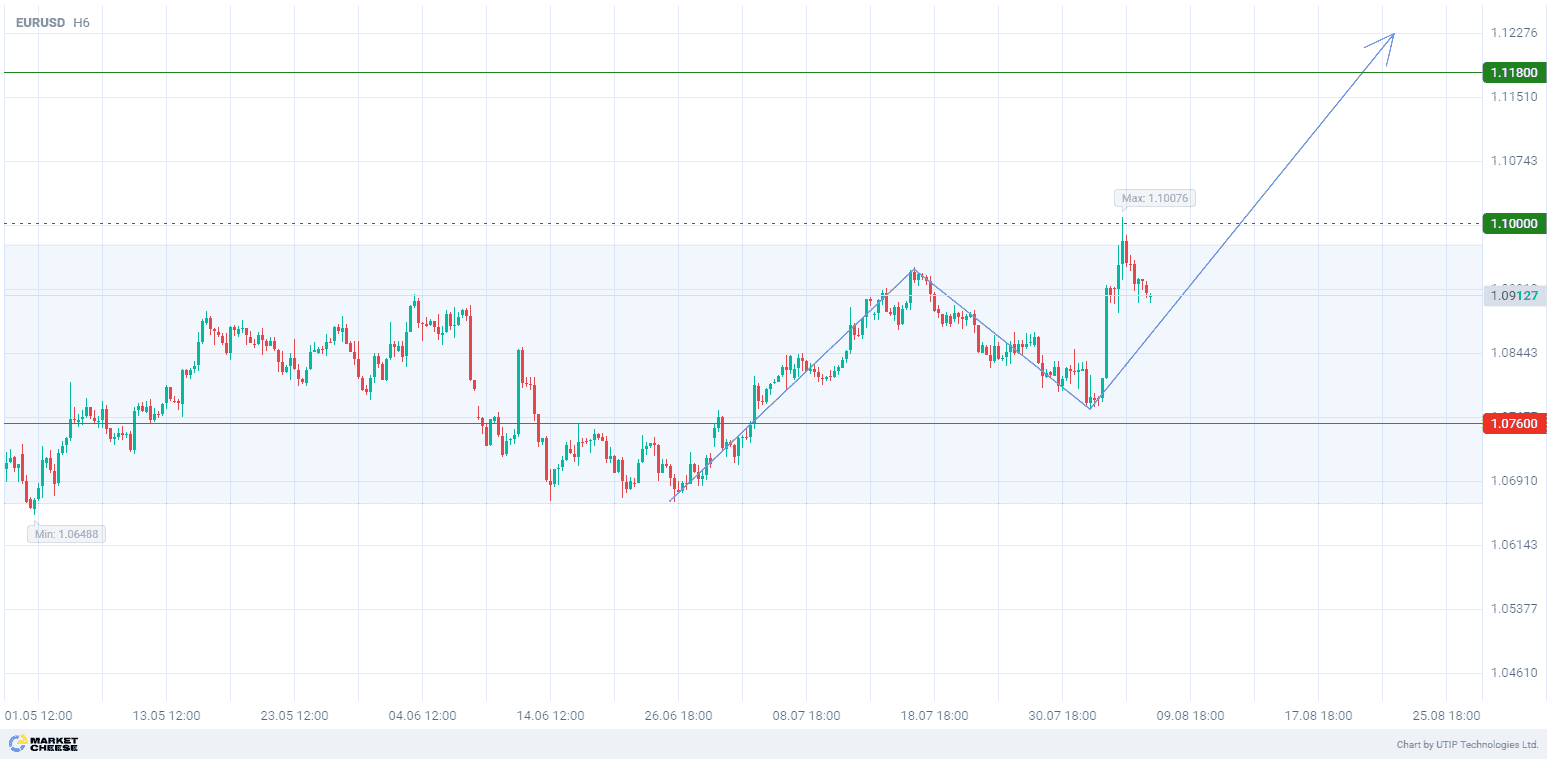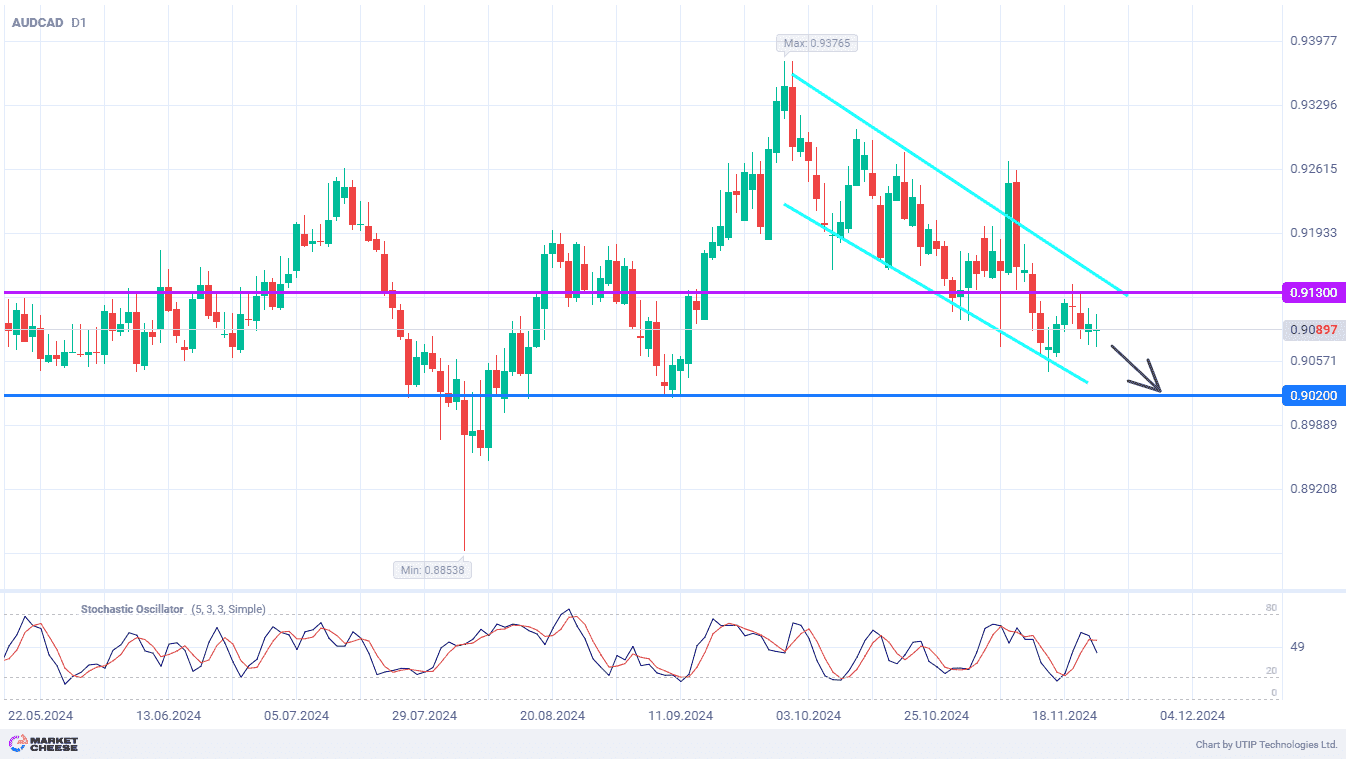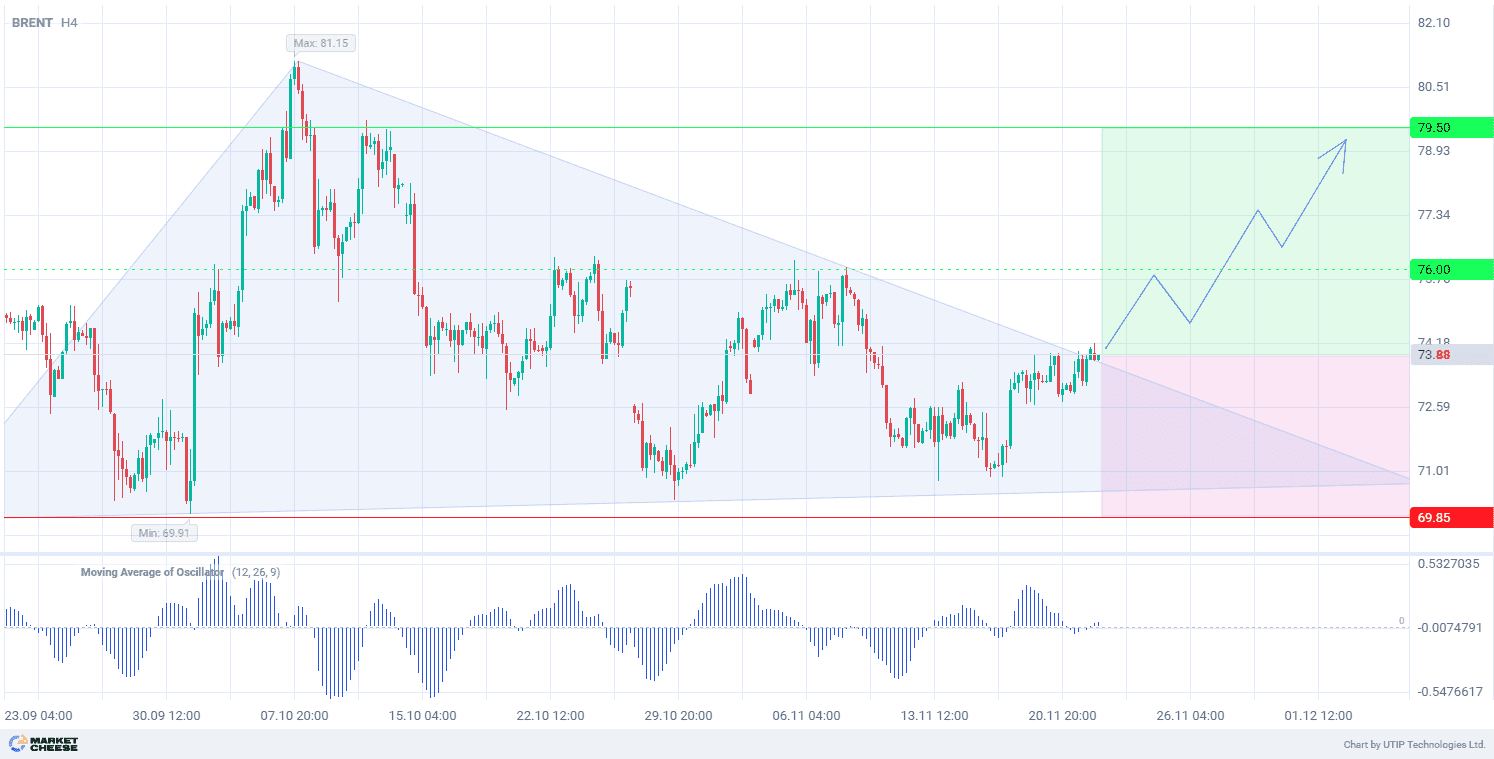The EURUSD currency pair is moderately declining on Wednesday after four days of growth. Traders are waiting for further signals to assess the probability of an interest rate cut by the Federal Reserve (Fed) in September.
Government data released on Tuesday showed that the US trade deficit narrowed by 2.5% to $73.1 billion in June from $75.0 billion in May. The decline was driven by a 1.5% increase in exports of airplanes, oil and gas.
Following the publication of weak labor market data last week, traders changed their expectations for an interest rate cut. According to the CME FedWatch tool, the likelihood that the Fed will ease monetary policy by 50 basis points in September dropped to 65% from 85% a day earlier.
Meanwhile, industrial production in Germany rose 1.4% month-on-month in June 2024 exceeding the market consensus forecast of 1.0% after a revised decline of 3.1% in the previous month. The data were released by the country’s Federal Statistical Office on Wednesday. It was the fourth rise for the year and the fastest one since February, mainly due to solid output in the automotive industry (7.5%) and electrical equipment manufacturing (5.2%). These statistics contribute to the euro’s strength.
At the technical level, the EURUSD rate is in a large correction channel on the D1 chart. However, the prices have already tested the upper limit of the range. In terms of wave analysis, the price is forming the third ascending wave on the H6 timeframe. Breaking through the top of the first wave at 1.0945 has already taken place. This indicates a potential strengthening of the upward momentum.
Signal:
The short-term outlook for EURUSD suggests buying.
The target is at the level of 1.1180.
Part of the profit should be taken near the level of 1.1000.
A Stop loss could be placed at the level of 1.0760.
The bullish trend is short-term, so the trading volume should not exceed 2% of your balance.










